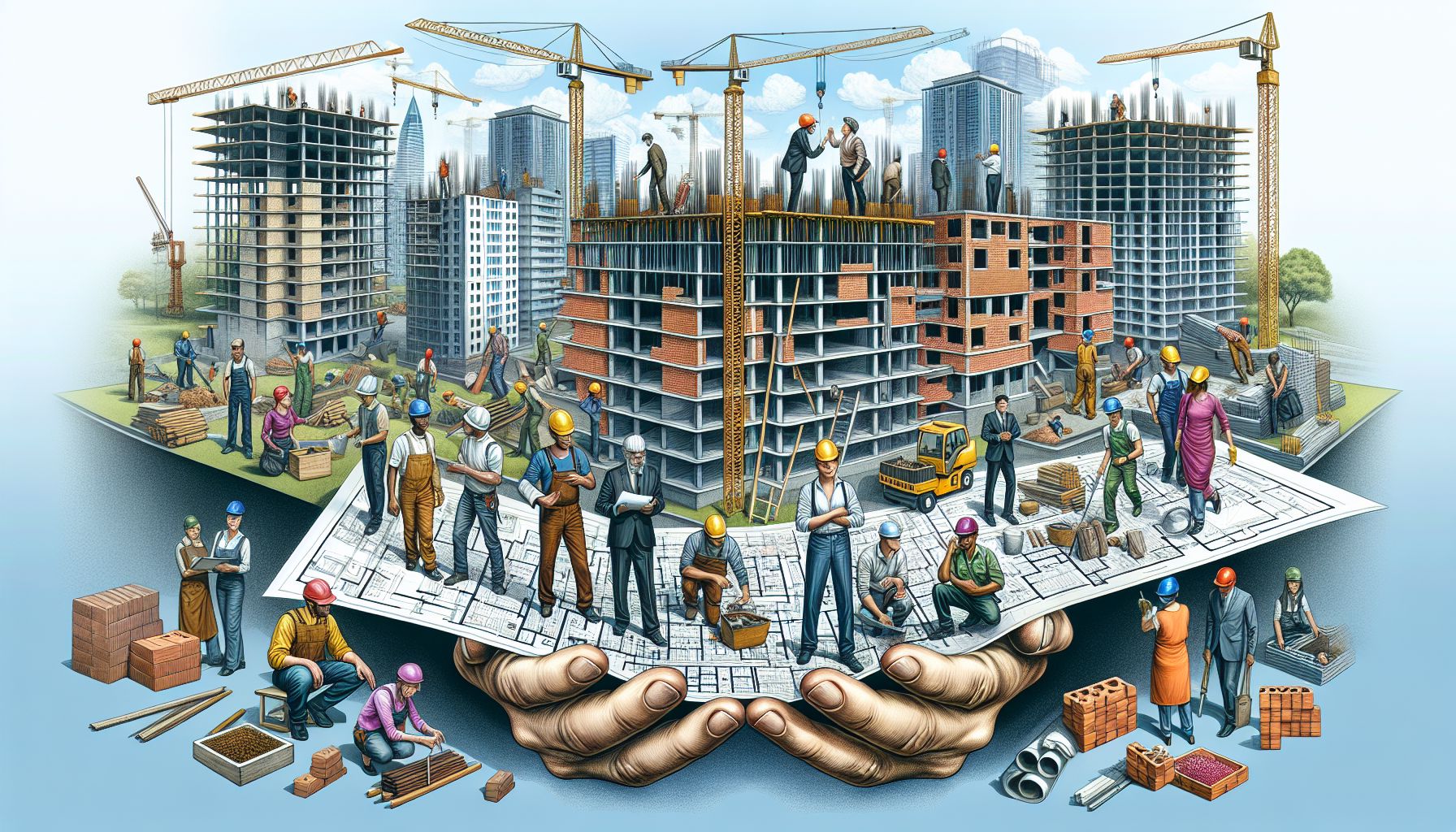
Introduction to Property Builders
In the ever-expanding real estate industry, property builders play a crucial role in shaping our built environment. Property builders, also known as property developers, are the driving force behind the construction of residential and commercial buildings. They are responsible for turning empty plots of land into vibrant communities, buzzing with life. In this article, we will delve into the world of property builders, exploring their key responsibilities, the steps involved in the construction process, and the importance of collaboration with various stakeholders.
Key Responsibilities of Property Builders
Property builders shoulder a multitude of responsibilities throughout the construction process. Before any building can take place, they must carefully analyze market conditions, conduct feasibility studies, and identify potential projects that align with their objectives. This initial stage requires extensive research and due diligence to ensure that the investment in a particular property will yield desirable returns.
Once a project has been identified, property builders must acquire the necessary permits and approvals from local authorities. They must navigate through the regulatory landscape, ensuring compliance with planning and zoning regulations, building codes, and environmental guidelines. This involves working closely with architects, engineers, and other industry professionals to develop comprehensive designs that meet both aesthetic and functional requirements.
The Construction Process
Step 1: Land Acquisition and Site Preparation
After acquiring the necessary permissions, property builders move onto the land acquisition and site preparation phase. This typically involves negotiating with landowners, conducting surveys, and ensuring legal formalities are fulfilled. Once the land is procured, it must be prepared for construction. This includes activities such as grading, leveling, and clearing the site of any obstacles.
Step 2: Design and Development
With the site ready, property builders collaborate with architects, structural engineers, and other professionals to develop detailed plans and blueprints. These plans encompass various aspects of the construction, including structural requirements, plumbing, electrical systems, and aesthetics. It is the responsibility of property builders to ensure that these designs align with local building regulations and industry standards.
Step 3: Procurement and Contracting
Once the design phase is complete, property builders move onto procurement and contracting. They source the necessary materials, equipment, and labor required for construction. This involves negotiating contracts, managing budgets, and ensuring adherence to project timelines. Property builders must carefully select subcontractors and suppliers, conducting thorough due diligence to ensure the project moves forward seamlessly.
Step 4: Construction and Quality Control
Construction activities commence once all necessary resources are in place. Property builders oversee the construction process, ensuring that all aspects of the project are executed according to the approved plans and specifications. They collaborate closely with construction managers, supervisors, and workers to maintain tight control over quality, cost, and time. Regular site inspections are conducted to monitor progress, address any issues, and implement necessary adjustments to ensure the project’s success.
Step 5: Project Completion and Handover
When construction is nearing completion, property builders coordinate with various stakeholders to finalize any finishing touches. This includes interior design, landscaping, and ensuring the installation of essential utilities and amenities. Once all tasks are completed, property builders obtain necessary clearances, certificates of occupancy, and other regulatory approvals. Following this, the property is prepared for handover to the end-users or buyers, marking the successful completion of the project.
Collaboration with Stakeholders
The role of property builders goes beyond overseeing construction activities. Building successful properties requires effective collaboration with numerous stakeholders, including investors, financial institutions, local communities, and government agencies. These collaborations are essential for ensuring the smooth progress of projects and addressing any concerns that may arise.
Property builders actively seek investment opportunities, engaging with investors and financial institutions to secure funding for their projects. This involves presenting detailed project proposals, financial forecasts, and risk mitigation strategies to showcase the potential returns on investment. By fostering strong relationships with investors, property builders can unlock the necessary capital to bring their visions to life.
Engaging with local communities is another critical aspect of a property builder’s responsibilities. They must address any concerns or objections raised by the community, ensuring transparency about the project’s impact on the surrounding area. This includes organizing public consultations, addressing environmental sustainability, and implementing community-oriented initiatives to demonstrate their commitment to responsible development.
Collaboration with government agencies and regulatory bodies is vital for navigating the complex framework of permits and approvals. Property builders must adhere to a variety of guidelines, ensuring their projects contribute to sustainable urban development, meet energy efficiency standards, and comply with health and safety regulations. Effective communication and collaboration with these agencies ensure a smoother construction process and minimize the risk of potential legal issues.








